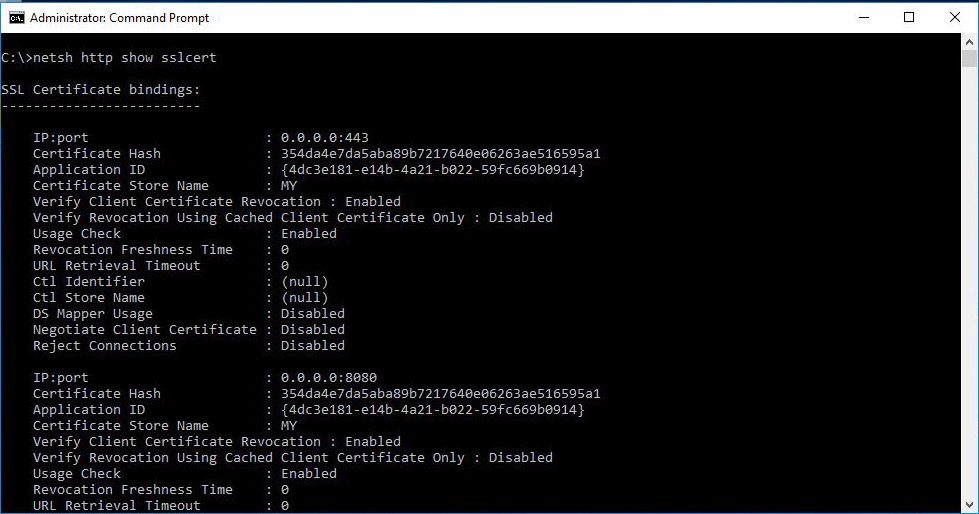Create ISO files using Powershell
You can use the following function in order to create .ISO files using Windows Powershell:
function New-IsoFile
{
<#
.Synopsis
Creates a new .iso file
.Description
The New-IsoFile cmdlet creates a new .iso file containing content from chosen folders
.Example
New-IsoFile "c:\tools","c:Downloads\utils"
Description
-----------
This command creates a .iso file in $env:temp folder (default location) that contains c:\tools and c:\downloads\utils folders. The folders themselves are added in the root of the .iso image.
.Example
dir c:\WinPE | New-IsoFile -Path c:\temp\WinPE.iso -BootFile etfsboot.com -Media DVDPLUSR -Title "WinPE"
Description
-----------
This command creates a bootable .iso file containing the content from c:\WinPE folder, but the folder itself isn't included. Boot file etfsboot.com can be found in Windows AIK. Refer to IMAPI_MEDIA_PHYSICAL_TYPE enumeration for possible media types:
http://msdn.microsoft.com/en-us/library/windows/desktop/aa366217(v=vs.85).aspx
.Notes
NAME: New-IsoFile
AUTHOR: Chris Wu
LASTEDIT: 03/06/2012 14:06:16
#>
Param (
[parameter(Position=0,Mandatory=$true,ValueFromPipeline=$true)]$Source,
[parameter(Position=1)][string]$Path = "$($env:temp)\" + (Get-Date).ToString("yyyyMMdd-HHmmss.ffff") + ".iso",
[string] $BootFile = $null,
[string] $Media = "Disk",
[string] $Title = (Get-Date).ToString("yyyyMMdd-HHmmss.ffff"),
[switch] $Force
)#End Param
Begin {
($cp = new-object System.CodeDom.Compiler.CompilerParameters).CompilerOptions = "/unsafe"
if (!("ISOFile" -as [type])) {
Add-Type -IgnoreWarnings -CompilerParameters $cp -TypeDefinition @"
public class ISOFile
{
public unsafe static void Create(string Path, object Stream, int BlockSize, int TotalBlocks)
{
int bytes = 0;
byte[] buf = new byte[BlockSize];
System.IntPtr ptr = (System.IntPtr)(&bytes);
System.IO.FileStream o = System.IO.File.OpenWrite(Path);
System.Runtime.InteropServices.ComTypes.IStream i = Stream as System.Runtime.InteropServices.ComTypes.IStream;
if (o == null) { return; }
while (TotalBlocks-- > 0) {
i.Read(buf, BlockSize, ptr); o.Write(buf, 0, bytes);
}
o.Flush(); o.Close();
}
}
"@
}#End If
if ($BootFile -and (Test-Path $BootFile)) {
($Stream = New-Object -ComObject ADODB.Stream).Open()
$Stream.Type = 1 # adFileTypeBinary
$Stream.LoadFromFile((Get-Item $BootFile).Fullname)
($Boot = New-Object -ComObject IMAPI2FS.BootOptions).AssignBootImage($Stream)
}#End If
$MediaType = @{CDR=2; CDRW=3; DVDRAM=5; DVDPLUSR=6; DVDPLUSRW=7; DVDPLUSR_DUALLAYER=8; DVDDASHR=9; DVDDASHRW=10; DVDDASHR_DUALLAYER=11; DISK=12; DVDPLUSRW_DUALLAYER=13; BDR=18; BDRE=19 }
if ($MediaType[$Media] -eq $null) { write-debug "Unsupported Media Type: $Media"; write-debug ("Choose one from: " + $MediaType.Keys); break }
($Image = new-object -com IMAPI2FS.MsftFileSystemImage -Property @{VolumeName=$Title}).ChooseImageDefaultsForMediaType($MediaType[$Media])
if ((Test-Path $Path) -and (!$Force)) { "File Exists $Path"; break }
if (!($Target = New-Item -Path $Path -ItemType File -Force)) { "Cannot create file $Path"; break }
}
Process {
switch ($Source) {
{ $_ -is [string] } { $Image.Root.AddTree((Get-Item $_).FullName, $true); continue }
{ $_ -is [IO.FileInfo] } { $Image.Root.AddTree($_.FullName, $true); continue }
{ $_ -is [IO.DirectoryInfo] } { $Image.Root.AddTree($_.FullName, $true); continue }
}#End switch
}#End Process
End {
if ($Boot) { $Image.BootImageOptions=$Boot }
$Result = $Image.CreateResultImage()
[ISOFile]::Create($Target.FullName,$Result.ImageStream,$Result.BlockSize,$Result.TotalBlocks)
$Target
}#End End
}#End function New-IsoFile
function New-IsoFile
{
<#
.Synopsis
Creates a new .iso file
.Description
The New-IsoFile cmdlet creates a new .iso file containing content from chosen folders
.Example
New-IsoFile "c:\tools","c:Downloads\utils"
Description
-----------
This command creates a .iso file in $env:temp folder (default location) that contains c:\tools and c:\downloads\utils folders. The folders themselves are added in the root of the .iso image.
.Example
dir c:\WinPE | New-IsoFile -Path c:\temp\WinPE.iso -BootFile etfsboot.com -Media DVDPLUSR -Title "WinPE"
Description
-----------
This command creates a bootable .iso file containing the content from c:\WinPE folder, but the folder itself isn't included. Boot file etfsboot.com can be found in Windows AIK. Refer to IMAPI_MEDIA_PHYSICAL_TYPE enumeration for possible media types:
http://msdn.microsoft.com/en-us/library/windows/desktop/aa366217(v=vs.85).aspx
.Notes
NAME: New-IsoFile
AUTHOR: Chris Wu
LASTEDIT: 03/06/2012 14:06:16
#>
Param (
[parameter(Position=0,Mandatory=$true,ValueFromPipeline=$true)]$Source,
[parameter(Position=1)][string]$Path = "$($env:temp)\" + (Get-Date).ToString("yyyyMMdd-HHmmss.ffff") + ".iso",
[string] $BootFile = $null,
[string] $Media = "Disk",
[string] $Title = (Get-Date).ToString("yyyyMMdd-HHmmss.ffff"),
[switch] $Force
)#End Param
Begin {
($cp = new-object System.CodeDom.Compiler.CompilerParameters).CompilerOptions = "/unsafe"
if (!("ISOFile" -as [type])) {
Add-Type -IgnoreWarnings -CompilerParameters $cp -TypeDefinition @"
public class ISOFile
{
public unsafe static void Create(string Path, object Stream, int BlockSize, int TotalBlocks)
{
int bytes = 0;
byte[] buf = new byte[BlockSize];
System.IntPtr ptr = (System.IntPtr)(&bytes);
System.IO.FileStream o = System.IO.File.OpenWrite(Path);
System.Runtime.InteropServices.ComTypes.IStream i = Stream as System.Runtime.InteropServices.ComTypes.IStream;
if (o == null) { return; }
while (TotalBlocks-- > 0) {
i.Read(buf, BlockSize, ptr); o.Write(buf, 0, bytes);
}
o.Flush(); o.Close();
}
}
"@
}#End If
if ($BootFile -and (Test-Path $BootFile)) {
($Stream = New-Object -ComObject ADODB.Stream).Open()
$Stream.Type = 1 # adFileTypeBinary
$Stream.LoadFromFile((Get-Item $BootFile).Fullname)
($Boot = New-Object -ComObject IMAPI2FS.BootOptions).AssignBootImage($Stream)
}#End If
$MediaType = @{CDR=2; CDRW=3; DVDRAM=5; DVDPLUSR=6; DVDPLUSRW=7; DVDPLUSR_DUALLAYER=8; DVDDASHR=9; DVDDASHRW=10; DVDDASHR_DUALLAYER=11; DISK=12; DVDPLUSRW_DUALLAYER=13; BDR=18; BDRE=19 }
if ($MediaType[$Media] -eq $null) { write-debug "Unsupported Media Type: $Media"; write-debug ("Choose one from: " + $MediaType.Keys); break }
($Image = new-object -com IMAPI2FS.MsftFileSystemImage -Property @{VolumeName=$Title}).ChooseImageDefaultsForMediaType($MediaType[$Media])
if ((Test-Path $Path) -and (!$Force)) { "File Exists $Path"; break }
if (!($Target = New-Item -Path $Path -ItemType File -Force)) { "Cannot create file $Path"; break }
}
Process {
switch ($Source) {
{ $_ -is [string] } { $Image.Root.AddTree((Get-Item $_).FullName, $true); continue }
{ $_ -is [IO.FileInfo] } { $Image.Root.AddTree($_.FullName, $true); continue }
{ $_ -is [IO.DirectoryInfo] } { $Image.Root.AddTree($_.FullName, $true); continue }
}#End switch
}#End Process
End {
if ($Boot) { $Image.BootImageOptions=$Boot }
$Result = $Image.CreateResultImage()
[ISOFile]::Create($Target.FullName,$Result.ImageStream,$Result.BlockSize,$Result.TotalBlocks)
$Target
}#End End
}#End function New-IsoFile

